This post may contain affiliate links. Please read our disclosure policy.
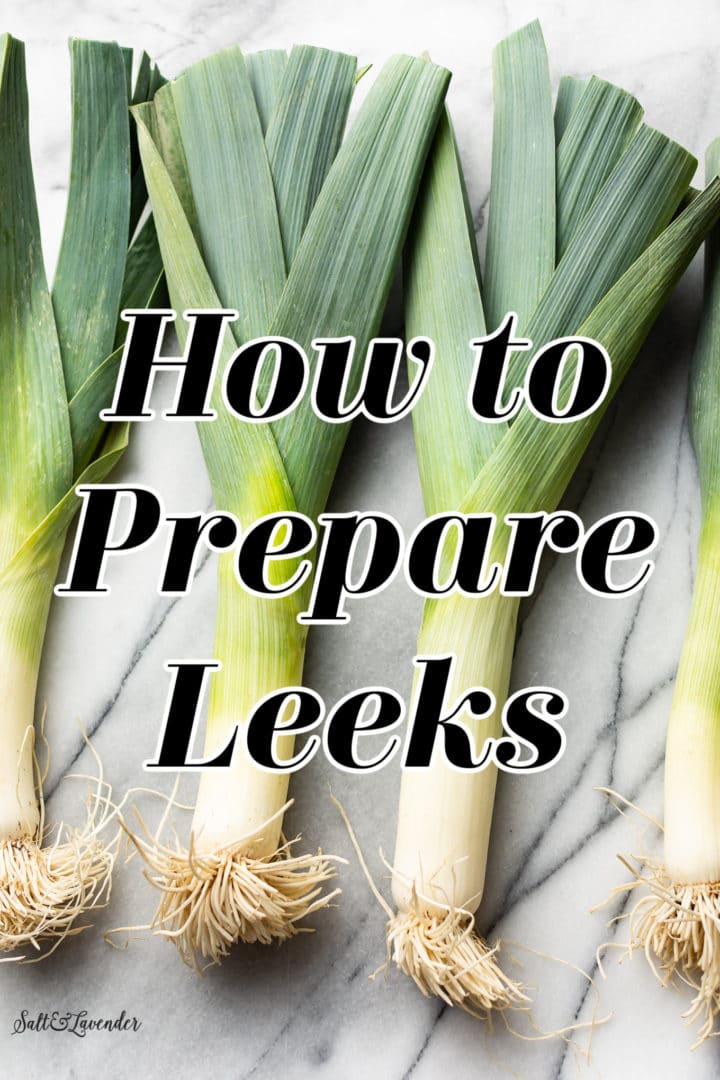
What are leeks?
Leeks are vegetables in the onion family (they’re alliums, along with scallions/spring onions, chives, garlic, shallots, etc). They vary in size and can range from quite small to quite large (but they’re typically much larger than their similar looking family member scallions).
What do leeks taste like?
Leeks taste similar to onions, but much milder and a little sweeter. I find they have a buttery quality, especially when sautéed. Larger, older leeks tend to be a bit stronger in flavor.
How to cut leeks?
Start by cutting off the dark green part (retain as much of the light/medium green as you can… this will vary from leek to leek), then you cut off the end of the root. The white/light green part of the leek is what you’ll be using for your recipe.
How to clean and chop leeks
Leeks are notorious for having hidden dirt in between the layers. They grow in the soil, after all. There’s two main methods I use to clean leeks:
Method 1:
Start by slicing the bulb into rings. Add the rings to a colander and use your hands to break up the rings and dislodge any dirt that may be hiding. Let the rings drain (give it a good shake), then add them to any recipe that requires chopped leeks. Or, you can chop them even smaller after cleaning them.
Method 2:
In this method, the bulbs are cut in half lengthwise and you fan out each leek half under running water, sort of like you’re flipping through the pages of a book with your thumb. I find this method a little faster for removing dirt, and it’s nice if you need to cut the leek up into thin strips (julienne cut) for a particular recipe. Or, just chop it up into half rings once you’re done rinsing it. Most recipes aren’t too picky about how leeks are cut, especially ones that end up blended anyway (like many soups).
Can I use the dark green part of the leeks?
Can you eat leeks raw?
How to store leeks?
Can you freeze leeks?
What’s the difference between leeks and ramps?
Some tasty leek recipes to try:
- Potato Leek Soup – the classic and possibly most common use of leeks
- Instant Pot Potato Leek Soup – the electric pressure cooker version
- Bacon and Leek Pasta – an easy weeknight delight that’s not too heavy
- Potato, Leek, and Tomato Soup – one of my favorites that I make often
- Cauliflower and Leek Soup – healthy and low-carb
- Simple Sautéed Leeks – an easy side dish
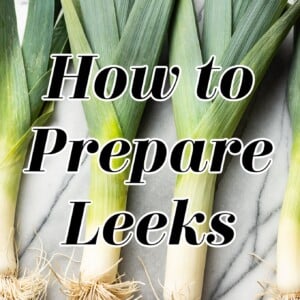
How to Prepare Leeks
Ingredients
- 1 leek
Instructions
- Cut the top dark green portion off the leek (keep the light green and white part of the bulb). Cut the end of the root off as well.
- Clean the leek: Start by slicing the bulb into rings. Add the rings to a colander and use your hands to break up the rings and dislodge any dirt that may be hiding. Let the rings drain (give it a good shake). This method and a second method are illustrated with photos within the blog post.
- Use for any recipe that requires chopped leeks.
Notes
- Nutritional information is provided as a courtesy only and should be construed as an estimate rather than a guarantee. Ingredients can vary and Salt & Lavender makes no guarantees to the accuracy of this information.
Nutrition
Nutrition information is automatically calculated, so should only be used as an approximation.
© Salt & Lavender Inc. Content and photographs are copyrighted. Sharing this blog post is much appreciated, but copying and pasting full recipes without authorization to social media is strictly prohibited.

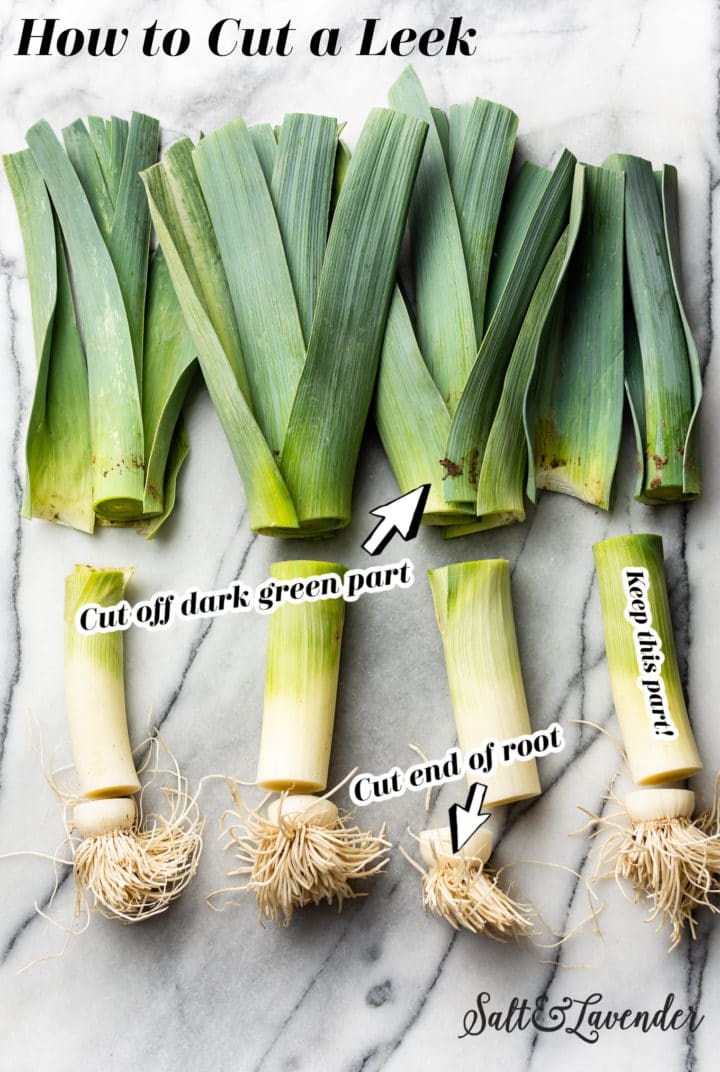
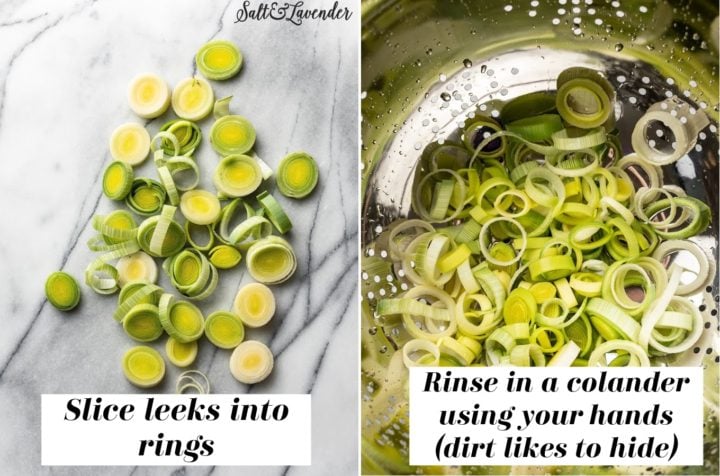
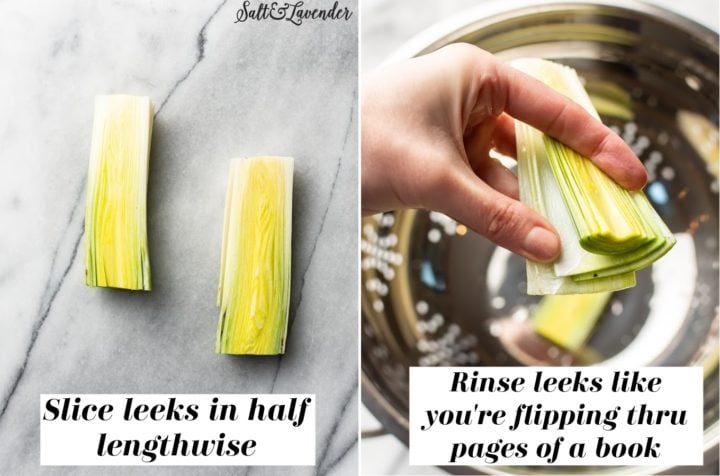

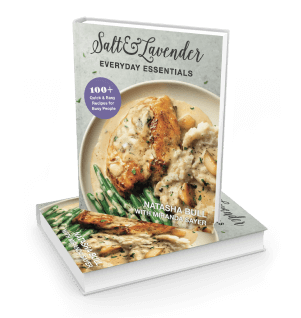









Leek tastes literally like meat crossed with cucumber if you want to know the exact flavor
Not everyone would have the same flavour but I don’t like leek even tho it tastes like meat haha
I found this helpful.. I have cut further into the dark green, peeled away the tougher leaves and used the core, but I probably shouldn’t have. I think that was why some of the pieces were tough even after cooked.
I’m so glad you found this useful! 🙂 Yes… you gotta be careful with those dark green leaves.